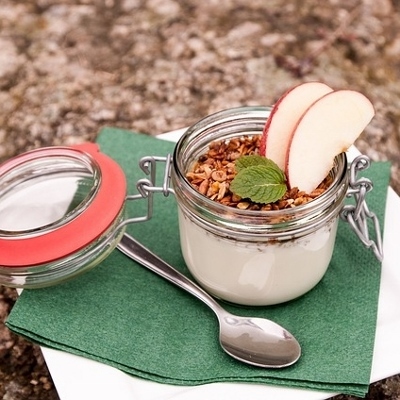 When you look at the ingredients in soda, at first glance, you might think - ah, it’s not that bad for me. I mean, there’s only six ingredients in coke: carbonated water, high fructose corn syrup, caramel coloring, phosphoric acid, natural flavors, and caffeine.
When you look at the ingredients in soda, at first glance, you might think - ah, it’s not that bad for me. I mean, there’s only six ingredients in coke: carbonated water, high fructose corn syrup, caramel coloring, phosphoric acid, natural flavors, and caffeine.
I always tell my clients that a good rule of thumb when you’re deciding whether or not to eat something is being able to pronounce all of the ingredients on the label. But, in this instance, I have to say that soda is an exception to this rule. Although I can easily pronounce all of the ingredients on the label, I would not want to put them in my body.
Clients often ask me, “what’s really so bad about soda?†So I decided to do a post giving you a closer look at what the ingredients in soda really do to our bodies, essentially giving you reasons not to drink it!
Buckle up, because this may be a bumpy ride for you!
Reason #1: High Fructose Corn Syrup (HFCS)
“It’s made from corn, it’s natural, and like sugar, it’s fine in moderation.â€
“Corn sugar or cane sugar, your body can’t tell the difference.â€
This is what the Corn Refiners Association (CRA), which represents the companies that make the syrup, tells us in their ads. When you hear words like “natural†and “your body can’t tell the difference,†you might think that HFCS is really not that bad for you, but here are a few things to think about that the CRA is NOT telling you.
HFCS replaced sugar in the 1970s as a much less expensive alternative to cane sugar. Despite what the CRA suggests in their ads, it’s hard to eat in moderation because it’s in so many packaged foods and beverages, soft drinks being the worst offenders!
According to Dana Flavin, author of the article Metabolic Danger of High-Fructose Corn Syrup, “between 1970 and 1990, the annual intake of HFCS has increased by more than 1,000%, greatly exceeding the change in intake of any other food or food group. HFCS is now the primary caloric sweetener added to soft drinks in the United States, and comprises more than 40% of caloric sweeteners added to foods and beverages.â€
While HFCS is derived from a natural source (corn), HFCS is essentially an unnatural, man-made product. The corn goes through a series of processes to continually break it down into starch, glucose, and fructose using enzymes produced by bacteria and fungus. The end product contains about 80% fructose and 20% glucose, twice as much fructose as table sugar. Not to mention that most HFCS is made from genetically modified corn.
Despite the CRAs claims that “your body can’t tell the difference,†science shows otherwise. There is great concern about the high intake of HFCS because fructose is metabolized differently from glucose. While they are both simple sugars, glucose can be metabolized and burned for energy, as well as stored in the liver for later use. Where fructose is more rabidly metabolized in the liver (essentially it is converted to fat by the liver), which leads to an excess concentration of fats and lipoproteins in your body. A rise in triglyceride levels promotes atherosclerosis and elevates cardiovascular risk, while increased fat storage in the liver may lead to increased incidence of non-alcoholic fatty liver disease.
A number of studies conducted over the past few decades show the consumption of HFCS is also linked to weight gain and obesity, insulin resistance and type II diabetes, hypertension, high cholesterol, kidney stone formation, and gout.
So if you want to get fit and maintain a lean, healthy body, you must cut HFCS from your diet, and you can start by kicking the soda!
Reason #2: Caramel Flavoring
In February 2011 the Center for Science in the Public Interest filed a petition to the FDA to ban the use of caramel colorings in soda. Why? Because based on their research they found that the caramel coloring used in Coca-Cola, Pepsi, and other foods is contaminated with two cancer-causing chemicals.
The National Toxicology Program (the division of the National Institute of Environmental Health Sciences that conducted the animal studies) said that the evidence is clear that these two chemicals are in fact animal carcinogens, and chemicals that cause cancer in animals pose a risk of cancer to humans.
The caramel used in sodas is not the same as what you might make in your kitchen from scratch. The caramel used in colas and some other products is a man-made chemical concoction—it is not found in nature. It’s made by reacting sugars with ammonia and sulfites under high pressure and temperatures. These chemical reactions result in the formation of 2-methylimidazole and 4-methylimidazole, which the studies conduced by the NIEHS showed caused lung, liver, thyroid cancer or leukemia in laboratory mice or rats.
I don’t know about you, but I don’t want to use my own body as an experiment to see if caramel flavoring may or may not make me sick. This is yet another reason why I stopped drinking soda years ago.
To kicking soda,
Melissa Koerner
www.FriendYourBody.com
Check back next month for reasons three through five!





